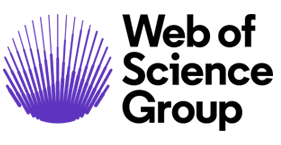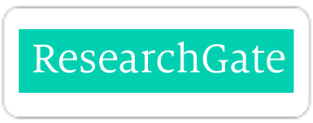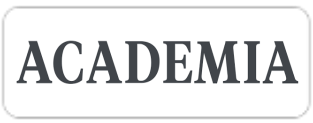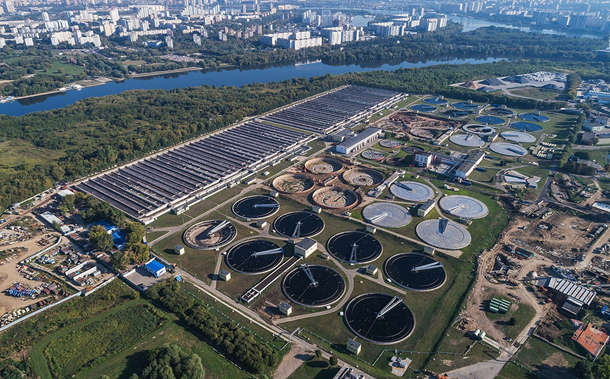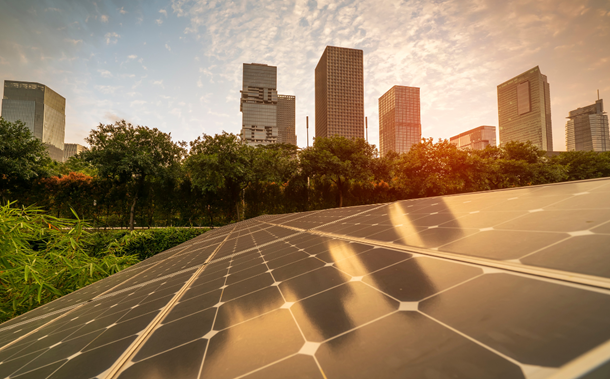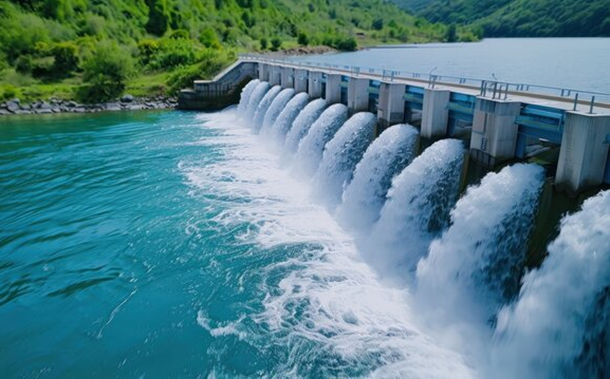Assessment and Evaluation of IWRM Implementation in Palawan, Philippines
Downloads
Doi:10.28991/CEJ-2022-08-02-08
Full Text:PDF
Downloads
[2] Santamouris, M. (2020). Recent progress on urban overheating and heat island research. Integrated assessment of the energy, environmental, vulnerability and health impact. Synergies with the global climate change. Energy and Buildings, 207. doi:10.1016/j.enbuild.2019.109482.
[3] Kafy, A., Abdullah-Al-Faisal, Raikwar, V., Rakib, A. Al, Kona, M. A., & Ferdousi, J. (2021). Geospatial approach for developing an integrated water resource management plan in Rajshahi, Bangladesh. Environmental Challenges, 4, 100139. doi:10.1016/j.envc.2021.100139.
[4] Shakhawat Hossain, M., Arshad, M., Qian, L., Kächele, H., Khan, I., Din Il Islam, M., & Golam Mahboob, M. (2020). Climate change impacts on farmland value in Bangladesh. Ecological Indicators, 112, 106181. doi:10.1016/j.ecolind.2020.106181.
[5] Azhoni, A., Holman, I., & Jude, S. (2017). Adapting water management to climate change: Institutional involvement, inter-institutional networks and barriers in India. Global Environmental Change, 44, 144–157. doi:10.1016/j.gloenvcha.2017.04.005.
[6] Reynolds JF., Mark D., Smith S., Lambin EF., Li BLT., Mortimore M., Batterbury SPJ., Downing TE., Dowlatabadi H., Fernández RJ., Herrick JE., Huber Sannwald E., Jiang H., Leemans R., Lynam T., Maestre FT., Ayarza M., & Walker B. (2007). Global Desertification: Building a Science for Dryland Development. Science, 316, 290–297.
[7] Pahl-Wostl, C. (2007). The implications of complexity for integrated resources management. Environmental Modelling and Software, 22(5), 561–569. doi:10.1016/j.envsoft.2005.12.024.
[8] Huitema, D., Mostert, E., Egas, W., Moellenkamp, S., Pahl-Wostl, C., & Yalcin, R. (2009). Adaptive water governance: Assessing the institutional prescriptions of adaptive (co-)management from a governance perspective and defining a research agenda. Ecology and Society, 14(1), 26. doi:10.5751/ES-02827-140126.
[9] Nshimbi, C. C. (2019). SDGs and decentralizing water management for transformation: Normative policy coherence for water security in SADC river basin organizations. Physics and Chemistry of the Earth, 111, 1–12. doi:10.1016/j.pce.2019.02.010.
[10] United Nations Development Programme. (2006). Human Development Report - Beyond scarcity: Power, poverty and the global water crisis. vol. 28. Available online: http://hdr.undp.org/en/media/HDR06-complete.pdf (accessed on August 2021).
[11] Al-Saidi, M. (2017). Conflicts and security in integrated water resources management. Environmental Science and Policy, 73, 38–44. doi:10.1016/j.envsci.2017.03.015.
[12] Biggs, E. M., Duncan, J. M. A., Atkinson, P. M., & Dash, J. (2013). Plenty of water, not enough strategy. How inadequate accessibility, poor governance and a volatile government can tip the balance against ensuring water security: The case of Nepal. Environmental Science and Policy, 33, 388–394. doi:10.1016/j.envsci.2013.07.004.
[13] UNEP. (2018). Progress on Integrated Water Resources Management - Degree of IWRM Implementation. Water Science and Technology, 62, 1–69.
[14] Momblanch, A., Pedro-Monzonís, M., Solera, A., & Andreu, J. (2018). Water Accounting for Integrated Water Resources Management. Advances in Chemical Pollution, Environmental Management and Protection, 3, 63–96. doi:10.1016/bs.apmp.2018.08.001.
[15] Gupta, J., Pahl-Wostl, C., & Zondervan, R. (2013). "Glocal” water governance: A multi-level challenge in the anthropocene. Current Opinion in Environmental Sustainability, 5(6), 573–580. doi:10.1016/j.cosust.2013.09.003.
[16] Loucks, D. P., & van Beek, E. (2017). Water resource systems planning and management: An introduction to methods, models, and applications. In Water Resource Systems Planning and Management: An Introduction to Methods, Models, and Applications. Springer. doi:10.1007/978-3-319-44234-1.
[17] Petit, O., & Baron, C. (2009). Integrated Water Resources Management: From general principles to its implementation by the state. The case of Burkina Faso. Natural Resources Forum, 33(1), 49–59. doi:10.1111/j.1477-8947.2009.01208.x.
[18] Folke, C. (2006). Resilience: The emergence of a perspective for social-ecological systems analyses. Global Environmental Change, 16(3), 253–267. doi:10.1016/j.gloenvcha.2006.04.002.
[19] Sivapalan, M., Savenije, H. H. G., & Blöschl, G. (2012). Socio-hydrology: A new science of people and water. Hydrological Processes, 26(8), 1270–1276. doi:10.1002/hyp.8426.
[20] Badham, J., Elsawah, S., Guillaume, J. H. A., Hamilton, S. H., Hunt, R. J., Jakeman, A. J., ... Bammer, G. (2019). Effective modeling for Integrated Water Resource Management: A guide to contextual practices by phases and steps and future opportunities. Environmental Modelling & Software, 116, 40–56. doi:10.1016/j.envsoft.2019.02.013.
[21] Pahl-Wostl, C., Knieper, C., Lukat, E., Meergans, F., Schoderer, M., Schütze, N., Schweigatz, D., Dombrowsky, I., Lenschow, A., Stein, U., Thiel, A., Tröltzsch, J., & Vidaurre, R. (2020). Enhancing the capacity of water governance to deal with complex management challenges: A framework of analysis. Environmental Science and Policy, 107, 23–35. doi:10.1016/j.envsci.2020.02.011.
[22] Barbosa, M. C., Mushtaq, S., & Alam, K. (2017). Integrated water resources management: Are river basin committees in Brazil enabling effective stakeholder interaction? Environmental Science and Policy, 76, 1–11. doi:10.1016/j.envsci.2017.06.002.
[23] Jacobson, M., Meyer, F., Oia, I., Reddy, P., & Tropp, H. (2013). User's guide on assessing water governance. United Nations Development Programme: Stockholm, Sweden.
[24] Kumar, M. D., Batchelor, C., & James, A. J. (2019). Operationalizing IWRM concepts at the basin level: From theory to practice. From Catchment Management to Managing River Basins, 1, 299–329. doi:10.1016/b978-0-12-814851-8.00011-2.
[25] Ching, L., & Mukherjee, M. (2015). Managing the socio-ecology of very large rivers: Collective choice rules in IWRM narratives. Global Environmental Change, 34, 172–184. doi:10.1016/j.gloenvcha.2015.06.012.
[26] Leong, C. (2021). Narratives and water: A bibliometric review. Global Environmental Change, 68, 102267. doi:10.1016/j.gloenvcha.2021.102267.
[27] Anderson, A., Karar, E., & Farolfi, S. (2009). Synthesis: IWRM lessons for implementation. Water SA, 34(6), 665–670. doi:10.4314/wsa.v34i6.183667.
[28] Agarwal, A., delos Angeles, M. S., Bhatia, R., Chéret, I., Davila-Poblete, S., Falkenmark, M., ... & Wright, A. (2000). Integrated water resources management. Global Water Partnership/Swedish International Development Agency, Stockholm, Sweden.
[29] Savenije, H. H., & Van der Zaag, P. (2008). Integrated water resources management: Concepts and issues. Physics and Chemistry of the Earth, Parts A/B/C, 33(5), 290-297. doi:10.1016/j.pce.2008.02.003.
[30] Zaag, P. V. Der, & Savenije, H. H. G. (2012). Principles of Integrated Water Resources Management. Great Lakes, 165–165, 165–165. doi:10.1201/b13146-9.
[31] Apostolaki, S., Koundouri, P., & Pittis, N. (2019). Using a systemic approach to address the requirement for Integrated Water Resource Management within the Water Framework Directive. Science of the Total Environment, 679, 70–79. doi:10.1016/j.scitotenv.2019.05.077.
[32] Ojha, C. S. P., Surampalli, R. Y., & Bárdossy, A. (2017). Sustainable Water Resources Management. American Society of Civil Engineers. doi:10.1061/9780784414767
[33] Rahman, M. S., Mohiuddin, H., Kafy, A. Al, Sheel, P. K., & Di, L. (2019). Classification of cities in Bangladesh based on remote sensing derived spatial characteristics. Journal of Urban Management, 8(2), 206–224. doi:10.1016/j.jum.2018.12.001.
[34] Katusiime, J., & Schütt, B. (2020). Integrated water resources management approaches to improve water resources governance. Water (Switzerland), 12(12), 1–22. doi:10.3390/w12123424.
[35] Akhmadiyeva, Z., & Abdullaev, I. (2019). Water management paradigm shifts in the Caspian Sea region: Review and outlook. Journal of Hydrology, 568, 997–1006. doi:10.1016/j.jhydrol.2018.11.009.
[36] Collins, R., Johnson, D., Crilly, D., Rickard, A., Neal, L., Morse, A., Walker, M., Lear, R., Deasy, C., Paling, N., Anderton, S., Ryder, C., Bide, P., & Holt, A. (2020). Collaborative water management across England – An overview of the Catchment Based Approach. Environmental Science and Policy, 112, 117–125. doi:10.1016/j.envsci.2020.06.001.
[37] Ahmad, A. Y., & Al-Ghouti, M. A. (2020). Approaches to achieve sustainable use and management of groundwater resources in Qatar: A review. Groundwater for Sustainable Development, 11, 100367. doi:10.1016/j.gsd.2020.100367.
[38] Brown, A. R., Webber, J., Zonneveld, S., Carless, D., Jackson, B., Artioli, Y., Miller, P. I., Holmyard, J., Baker-Austin, C., Kershaw, S., Bateman, I. J., & Tyler, C. R. (2020). Stakeholder perspectives on the importance of water quality and other constraints for sustainable mariculture. Environmental Science and Policy, 114, 506–518. doi:10.1016/j.envsci.2020.09.018.
[39] Chang, I. S., Zhao, M., Chen, Y., Guo, X., Zhu, Y., Wu, J., & Yuan, T. (2020). Evaluation on the integrated water resources management in China's major cities -- Based on City Blueprint® Approach. Journal of Cleaner Production, 262, 121410. doi:10.1016/j.jclepro.2020.121410.
[40] He, C., Harden, C. P., & Liu, Y. (2020). Comparison of water resources management between China and the United States. Geography and Sustainability, 1(2), 98–108. doi:10.1016/j.geosus.2020.04.002.
[41] Hooper, B. (2015). Integrated River Basin Governance: Learning from International Experience. Water Intelligence Online, 4(0), 9781780402970–9781780402970. doi:10.2166/9781780402970.
[42] SDSN Secretariat. (2014). Framing Sustainable Development Goals, Targets, and Indicators. Sustainable Development Solutions Network. Available online: https://resources.unsdsn.org/framing-sustainable-development-goals-targets-and-indicators (accessed on May 2021).
[43] United Nations: UN Water. (2019). Indicator 6.5.1 "Degree of integrated water resources management implementation (0-100)”. Available online: https://www.sdg6monitoring.org/indicator-651/ (accessed on May 2021).
[44] Cayabo Jr., G. D. B., O., D. M., Bacosa, J. A. M.-O., & P, H. (2021). Bacteriological assessment of the recreational water of Bacuit Bay, El Nido, Palawan, Philippines. Palawan Scientist, Western Philippines University, 13(1), 44–58.
[45] Hermanito Consad II. (2015). Supply & Quality of Drinking Water & Prevalence of Waterborne Diseases in Selected Barangays of Puerto Princesa, Palawan , Philippines, International Conference of Higher Education Research Forum, Manila, Philippines.
[46] United Nations Environment Programme (UNEP). Country Questionnaire for Indicator 6.5.1: ENG_6_5_1_Questionnaire. Available online: https://www.gwp.org/globalassets/global/gwp-sas_images/gwp-sas-in-action/sdg/country-questionnaire-for-indicator-6.5.1.pdf (accessed on November 2021).
[47] Gonzales, B. J. (2004). Puerto Princesa Bay and Honda Bay, Palawan: An Ecological Profile. Fisheries Resource Management Project.
[48] Puerto Princesa City Government. (2019). Water Resources. Available online: http://puertoprincesa.ph/?q=about-our-city/water-resources. (accessed on September 2021).
[49] Habeeb, N. J., & Weli, S. T. (2021). Combination of GIS with Different Technologies for Water Quality: An Overview. HighTech and Innovation Journal, 2(3), 262–272. doi:10.28991/hij-2021-02-03-10.
[50] Fabro, K. A. (2018). DENR wants tests done on El Nido drinking water. Available online: https://www.pressreader.com/ philippines/palawan-news/20180603/281694025463543 (accessed on September 2021).
[51] Anda, R. (2018). El Nido waters clean, tests show. Available online: https://newsinfo.inquirer.net/1053453/el-nido-waters-clean-tests-show (accessed on September 2021).
[52] Pacific Consultants International. (2006). Report: Environmentally Critical Areas Network (ECAN) Zones Management Plan for El Nido Municipality, Palawan, Philippines.
[53] Frank Joe Mojica, & Flornita Nangit Ferrer. (2018). The Profile of Umalad Watershed in Roxas, Palawan. Journal of Agricultural Science and Technology A, 8(4), 195–202. doi:10.17265/2161-6256/2018.04.002.
[54] Roxas Palawan: Philippines (2018). World Heritage Encyclopedia. Available online: http://www.worldheritage.org/ articles/eng/Roxas,_Palawan (accessed on September 2021).
[55] Chinee Palatino, ABS-CBN News, (2016). Palawan town residents complain of rusty, salty water supply. Available online: https://news.abs-cbn.com/nation/regions/05/27/16/palawan-town-residents-complain-of-rusty-salty-water-supply (accessed on September 2021).
[56] Environmental Resource Planning. (2015). Municipality of Taytay ECAN Resource Management Plan 2015-2020, Municipality of Taytay in the province of Palawan, Philippines. Available online: https://pcsd.gov.ph/wp-content/uploads/2020/12/2-Municipality-of-Taytay-ECAN-Resource-Management-Plan-2015-2020.pdf (accessed on May 2021).
[57] United Nations Environment Programme (UNEP). (2018). ENG_Step_by_step_methodology_6_5_1. Available online: https://unwater.org/app/uploads/2017/05/1_Step-by-step-methodology-6-5-1_Revision-2017-01-17_Final-1.pdf (accessed on September 2021).
[58] Ait-Kadi, M. (2016). Water for Development and Development for Water: Realizing the Sustainable Development Goals (SDGs) Vision. Aquatic Procedia, 6, 106–110. doi:10.1016/j.aqpro.2016.06.013.
[59] Shah, T. (2016). Increasing water security: the key to implementing the Sustainable Development Goals. Global Water Partnership (GWP) TEC Background Papers No. 22, 1-56.
[60] Rola, A. C., Pulhin, J. M., Tabios, G. Q., Lizada, J. C., & Dayo, M. H. F. (2015). Challenges of water governance in the Philippines. Philippine Journal of Science, 144(2), 197–208.
- Authors retain all copyrights. It is noticeable that authors will not be forced to sign any copyright transfer agreements.
- This work (including HTML and PDF Files) is licensed under a Creative Commons Attribution 4.0 International License.![]()


